Operation Optimisation Is At Risk Sans Data
- By Sharad Matade
- July 03, 2025
Jeremias Neuhaus: “One of the biggest challenges in adopting data-driven solutions in the tyre industry is the availability of data and convincing customers not just of the solution itself but of the value of data transfer and real-time monitoring."
The tyre industry faces a significant challenge in data availability with fragmented supply chains, a lack of standardisation and minimal digital infrastructure limiting operational efficiency. Despite the growing importance of predictive maintenance, many manufacturers still rely on manual processes, while competitive concerns and regulatory restrictions further restrict data sharing. This absence of real-time insights hampers decision-making, making operations reactive rather than proactive. However, digitalisation and advanced data analytics are gradually reshaping the landscape. Solutions like HF Xplore aim to bridge this gap, offering real-time monitoring and predictive capabilities that can drive efficiency, sustainability and cost reduction.
Data availability is a challenge in the tyre industry due to fragmented supply chains, lack of standardisation and limited digital infrastructure. Manufacturers, distributors and recyclers operate in silos, making data consolidation difficult. Many businesses still rely on manual processes, while competitive concerns and regulatory restrictions further limit data sharing. Tracking end-of-life tyres (ELTs) is particularly challenging, impacting recycling efficiency.
However, data availability is crucial for optimising operations, sustainability and innovation. Real-time data enables predictive maintenance, helping fleet operators reduce downtime and improve safety.
Accurate tracking of tyre usage and recycling supports circular economy initiatives and regulatory compliance. It also enhances research and development initiatives for advanced tyre materials such as electric vehicles and off-the-road (OTR) tyres, ensuring better performance and durability.
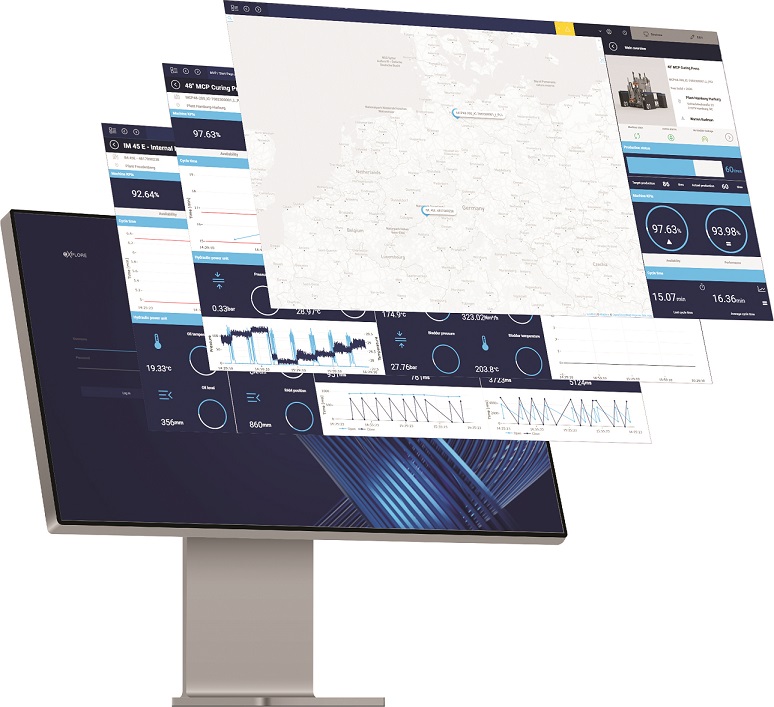
Improved data transparency can drive smarter decision-making, cost efficiency and sustainability in the industry. Digitalisation and data standardisation are key to overcoming these challenges.
However, HF Group’s Global Head of Digital Solutions, Jeremias Neuhaus, told Tyre Trends, “One of the biggest challenges in adopting data-driven solutions in the tyre industry is the availability of data and convincing customers not just of the solution itself but of the value of data transfer and real-time monitoring. Many decisions in the industry are still based on gut feeling rather than data-backed insights. Our focus is to bridge this gap by providing transparency into machine performance, enabling customers to make data-driven decisions instead of relying on intuition. By implementing real-time monitoring, we can significantly reduce downtime and help customers optimise processes. Even in the first step of implementation, simply visualising machine health and performance brings immediate value. Customers receive notifications for potential issues, allowing them to take preventive action before costly breakdowns occur.”
“The biggest opportunity in this space lies in the fact that data-driven insights can drastically improve operational efficiency. Once machines are connected and data is flowing, customers gain a much deeper understanding of the equipment, leading to better decision-making and optimised production cycles. Predictive maintenance and AI-driven analytics will further enhance operations by identifying potential failures before they occur. This is particularly crucial as manufacturers aim to reduce carbon emissions and energy consumption while increasing efficiency. Our approach stepwise towards AI-powered predictive solutions bring even greater efficiency and cost savings,” he added.
A critical concern in the tyre industry is data security and confidentiality, given how secretive manufacturers are about the respective production processes. “We address these concerns by focusing strictly on machine data rather than the proprietary tyre-making process. Our solutions do not need the actual process details to provide valuable insights. Additionally, the real, detailed data remains visible only to the customer, ensuring that they retain full control. In cases where AI-driven analytics are implemented, we collaborate closely with customers to develop models tailored to specific needs without compromising sensitive production data,” revealed Neuhaus.
The company launched the HF Xplore few years ago as a condition monitoring solution purely for curing presses. One of the significant developments following the merger of HF Mixing Group and HF Tire Tech Group has been the integration of previous initiatives into a joint project, creating a common condition monitoring solution. As a result, HF Xplore is now available for both curing presses and mixer lines. This expansion allows the company to offer real-time monitoring and predictive insights across two of the most critical processes in tyre manufacturing curing and mixing.
MONITORING TYRE FORMULATIONS
Curing and mixing are fundamentally different processes in tyre making, which presents a challenge in making HF Xplore compatible with both. The solution is to split monitoring into two layers viz-a-viz a common monitoring framework and machine-specific components.
The common framework includes monitoring cycle times, alarms, key performance indicators (KPIs) and production progress – elements that apply to both curing presses and mixer lines. However, each machine type has unique components that require dedicated monitoring.
For curing presses, especially electric-curing, HF Xplore focuses on monitoring hydraulic power unit and the electric curing, which is a crucial aspect of efficiency and quality control. On the other hand, for mixers, the system focuses on critical mechanical components such as the RAM movement, feeding mechanisms and drop doors, which are key areas that directly impact mixing performance and consistency. The drop doors, for instance, play a crucial role in ensuring a smooth transition of rubber to the downstream process, making their monitoring essential for operational reliability.
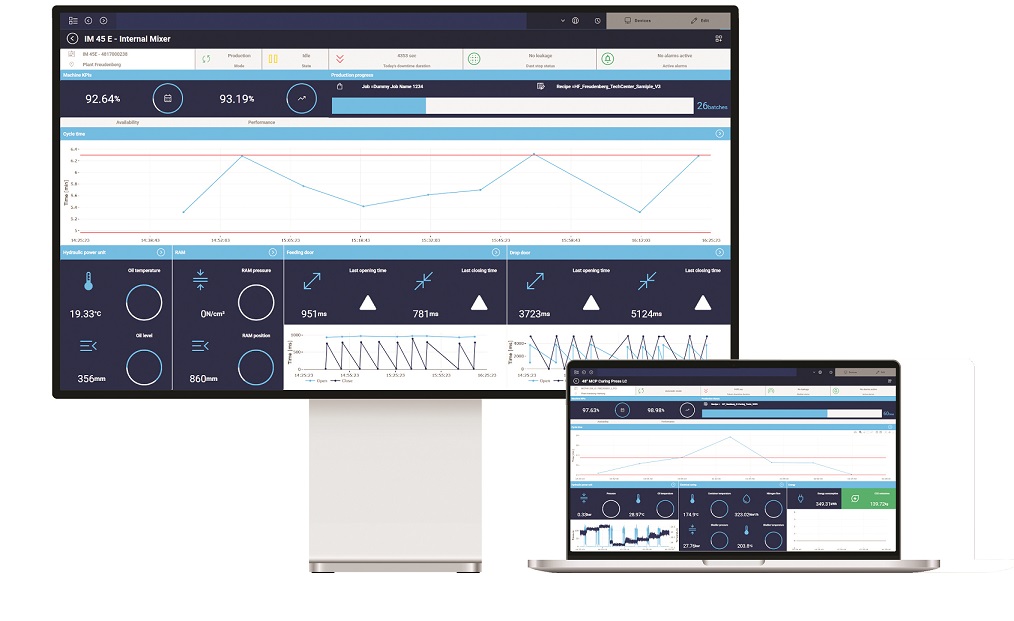
The user interface of HF Xplore is designed to maintain familiarity across different machines. The dashboard layout remains consistent, so users who are accustomed to using it for curing presses will find a similar experience when working with mixer lines. This consistency reduces the learning curve and makes the system more intuitive for users handling both curing and mixing equipment.
Behind the scenes, the company is investing heavily in data modelling to refine and improve predictive capabilities. The company is developing individualised, flexible data models tailored to each machine type.
These models analyse operational patterns, detect anomalies and provide real-time insights to minimise downtime. By combining machine-specific expertise with data-driven intelligence, HF Xplore continues to evolve into a powerful predictive maintenance and performance optimisation tool for the tyre manufacturing industry.
INTO DATA MODELS
HF Xplore captures machine data but doesn’t analyse it directly. Instead, the system applies background logic to determine whether values are within acceptable limits. Currently, its primary function is real-time status monitoring, giving users an overview of machine condition. However, future iterations will introduce predictive maintenance capabilities, allowing companies to anticipate and address potential failures before they happen.
“At this stage, HF Xplore detects and predicts issues but does not provide specific solutions. As the technology evolves, it will go beyond identifying potential failures to offering actionable recommendations. This shift will help businesses move from reactive maintenance to a more proactive approach, reducing downtime and improving operational efficiency. To refine predictive maintenance, the system is being trained with large datasets in collaboration with customers. Over time, this will enhance the system’s accuracy, enabling it to not only flag potential issues but also suggest corrective actions,” informed Neuhaus.
AI and machine learning will play a central role in the company’s future roadmap, following a structured three-step approach – visualise, analyse and predict.
The first step will provide real-time machine status and process transparency. In the analyse phase, the company’s solutions will move beyond monitoring to offer deeper insights. The system will evaluate performance trends, identify operational limits and provide status feedback. The final phase will be where AI and machine learning take centre stage by analysing vast amounts of historical and real-time data. AI models will identify patterns, forecast failures and recommend preventive actions.
Commenting on whether implementing HF Xplore for a curing press or a mixing system presents different challenges, he said, “While both require detailed monitoring, mixing systems are more complex due to the interconnected components including upstream and downstream processes. Unlike curing presses, which operate as standalone units, mixing lines require data collection across multiple machines for effective monitoring. However, HF Xplore benefits from deep integration with its own equipment, leveraging PLC data to ensure seamless functionality across different systems.”
But for this to be a reality, different data models are pivotal. “The data model is essential for structuring and standardising the information displayed on the dashboard,” informed Neuhaus.
RETROFITTING HF XPLORE
HF Xplore is compatible with both greenfield and brownfield machines, though older models with outdated PLCs may have limitations. “While we cannot retrofit machines that are using old automation solutions, HF Xplore can be integrated into machines from the past few years, especially for condition monitoring. With electric-curing, it also enables precise tracking of electric curing performance, enabling deeper insights,” informed Neuhaus.
“One key challenge is data governance and security. Traditionally, machine data remained within the plant, but HF Xplore connects operational technology with information technology, raising concerns about data ownership and security. To address this, we have implemented user-based access controls, IP-based security and data encryption,” informed the executive.
For tyre plants with a mix of HF and non-HF machines, HF Xplore offers a custom dashboard creator with low-code functionality, allowing users to integrate and visualise data from different machines in just a few hours. A flexible data model further ensures standardised visualisation, even when machine types vary. While full integration with non-HF machines may require additional work, HF Xplore provides a comprehensive plant-wide monitoring solution for optimising performance.
“HF Xplore can potentially integrate with machines from other companies, but it depends on data accessibility and PLC compatibility”, contended Neuhaus, who highlighted the flexibility and modularity of their solution.
- Ian Andrews
- NTDA
- National Tyre Distributors Association
- National Tire Conference and National Tire Awards
Charting A New Course For NTDA
- By Gaurav Nandi
- December 12, 2025
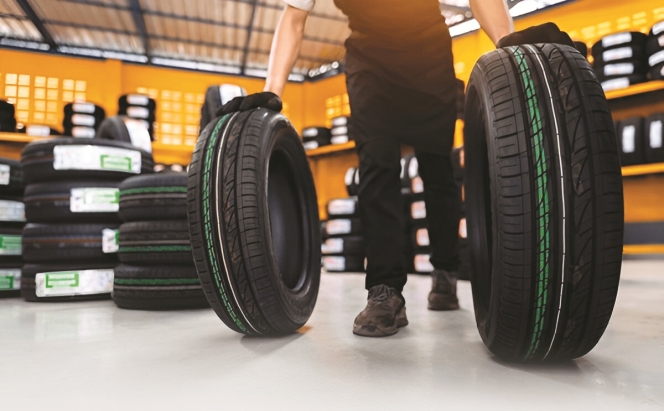
Ian Andrews steps into the role of NTDA Chief Executive at a precarious moment for the UK tyre industry, where skills shortages, demographic shifts and mounting environmental pressures threaten to outpace the sector’s readiness. New to tyres but not to membership organisations, Andrews must prove his ability to turn fresh perspective into actionable solutions bridging gaps in recruitment, diversity and sustainability while convincing members that the nearly century-old association can adapt quickly enough to safeguard its relevance.
Ian Andrews, the newly appointed Chief Executive Officer of the National Tyre Distributors Association (NTDA), has embarked on a mission to address urgent challenges within the UK tyre sector, undertaking a comprehensive strategy to tackle recruitment issues, enhance member engagement, promote collaboration and advance environmental sustainability.
Coming from two decades of senior leadership in membership-based organisations but new to the tyre industry itself, Andrews brings a fresh perspective combined with seasoned leadership skills to the nearly 100-year-old trade association.
Upon assuming his role, Andrews emphasised a grounded approach focused on learning directly from NTDA members. “My immediate priorities are to understand the challenges and opportunities that face the tyre sector here in UK, principally, but globally as well,” he shared.
 Approaching the role without preconceived notions, he aims to listen and respond to member feedback. Early indications point to recruitment and careers as pressing issues. “Careers and recruitment seem to be one of the early areas of work that we need to focus on. There are significant recruitment issues here in UK, not just in tyres but across the whole motor vehicle sector,” said Andrews during the exclusive interview with Tyre Trends.
Approaching the role without preconceived notions, he aims to listen and respond to member feedback. Early indications point to recruitment and careers as pressing issues. “Careers and recruitment seem to be one of the early areas of work that we need to focus on. There are significant recruitment issues here in UK, not just in tyres but across the whole motor vehicle sector,” said Andrews during the exclusive interview with Tyre Trends.
TACKLING GAPS
The UK tyre sector faces a looming demographic shift with a substantial number of experienced professionals expected to retire over the next decade, risking a critical loss of institutional knowledge and technical skills.
Andrews warned, “The sector has got a significant number of people who will retire in the next 10 years. So there’ll be a significant loss of knowledge and skills.”
While larger companies have training and HR departments to manage recruitment and development efforts, smaller businesses face a heavier burden. “They are doing it themselves, and if you’re employing somebody new, then it’s a huge commitment to train and develop that person until they start generating revenue and making a return on the investment,” he explained.
Recognising the sector’s traditionally male-dominated nature, Andrews stressed the imperative of building a more diverse workforce. “We need to look at getting a better and more diverse workforce. Moreover, any business should be reflective of the community it’s working in. If you’re in an ethnically diverse community, your workforce will be best when it’s ethnically diverse,” he noted.
Yet he acknowledged the cultural shift required will take time and that’s not going to happen overnight.
Furthermore, Brexit has complicated recruitment by reducing access to talent from Europe, shifting the focus predominantly to UK-based recruitment. “Most of the tyre sector focus is on UK recruitment, perhaps more so now after Brexit,” Andrews noted.
Despite these constraints, his message was clear: “If we keep doing what we’ve always done, we’ll end up with what we’ve always had. So we need to look at doing different things. Reaching different groups of people.”
To address the skills and professionalism gap, NTDA has expanded its tyre technician licensing schemes significantly. Andrews reported robust uptake with over 16,000 technicians licensed by the NTDA.
This growth is particularly notable in the past two years. Acknowledging the specialised skills needed in emerging technologies, he highlighted the introduction of licensing for electric vehicle tyre (EV) technicians. “The whole electric vehicle is bringing a new plethora of challenges and opportunities. It’s a different skill set. Everything is different in EVs,” he said.
ENGAGING MEMBERS
Member engagement and retention stand as foundational pillars for Andrews’s leadership as well. He aims to increase members’ awareness of
NTDA’s benefits and encourage their active participation. “Often, members pay their membership fee but don’t really explore all the member benefits,” he observed.
Plans include surveying members on their benefit awareness and usefulness while exploring additional services that may be introduced. To foster greater connection, Andrews is looking at enhancing local engagement through regional events across UK, alongside leveraging digital platforms.
He mentioned, “We run large national events in October, including our National Tire Conference and National Tire Awards, which are very well supported. But we need to explore how else we can engage with members on a more local basis for physical events but also on a digital basis.”
His previous experience includes organising half-day digital forums with speakers and interactive participation, offering participants the flexibility to attend live or watch recorded sessions later.
Collaboration within the sector forms a cornerstone of Andrews’s strategic outlook. While mindful and cautious of anti-competitive regulations, he believes substantial benefits can come from sharing resources and best practices, especially on recruitment and sustainability challenges.
“There’s always greater advantage in collaboration than there is in competition. Who is doing it well? What are they willing to share? What resources do they have that might be made more widely available?” he asserted.
At the same time, he acknowledged the necessity of protecting commercially sensitive information: “There will always be things that are commercially sensitive and need to be kept such, but that’s fine. Let’s collaborate on the 90 percent that isn’t commercially sensitive and keep the 10 percent that is.”
ENVIRONMENTAL STEWARDSHIP
Environmental stewardship and sustainability have emerged prominently on the NTDA agenda. Andrews described active engagement with the UK Environment Agency regarding the management of end-of-life tyres.
“We’re engaged with the agency that is responsible for where end-of-life tyres end up, making sure that they end up in the right place at the right time and don’t clog up our rivers, canals and green spaces,” he stated.
Growing government interest in tyre runoff impacting watercourses may further intensify oversight. “There’s government interest in where runoff from tyres is ending up in the water courses,” Andrews noted, emphasising the importance of proactive dialogue. “With all aspects of working with government, it’s about getting to them before they get to you.”
He committed to openness and transparency if issues arise, stating, “If there’s an issue, then be upfront and open that there’s an issue and we’re working on it and there is a solution.”
Looking to the future, Andrews identified his plans for NTDA’s next three to five years that include member growth, recruitment and environmental awareness. “Internally, it is driving member engagement and member value and therefore driving up member growth,” he shared.
Externally, recruitment and environmental matters are key concerns. Noting that larger companies typically have sustainability specialists, Andrews highlighted the need to support smaller businesses struggling to navigate sustainability practices. “Helping the whole sector regardless of the size of the business is important,” he said.
Throughout the interview, Andrews repeatedly underscored the fundamental role of the tyre industry in public health and safety. “The tyre sector is fundamentally about health, safety and well-being,” he emphasised.
“You wouldn’t put your most precious things anywhere without some assurance that they’re going to be safe. Let’s not put our partners, children, parents into vehicles without some assurance that the tyres are going to do the job that’s expected of them,” he asserted.
Based in Halesbury, Buckinghamshire, Andrews expressed enthusiasm for leading the NTDA forward. While new to tyres, he is confident in his ability to learn quickly with the board and executive council’s support. “The tyre stuff I will learn. When I joined the BPCA, I knew nothing about pest control. Now I’d like to think the same will be true of tyres. It’s all learnable,” he said.
He also stressed his readiness to bring expert colleagues to discussions, for example, when facing government ministers, to ensure the expertise needed is present.
As he takes charge of NTDA during a time of transformation, Andrews seeks to position the association as the collective voice of the tyre sector, delivering professional standards and fostering a collaborative, diverse and sustainable industry that prioritises safety and well-being.
Fornnax Inaugurates 12-Acre Global Hub For Recycling Innovation
- By TT News
- November 27, 2025
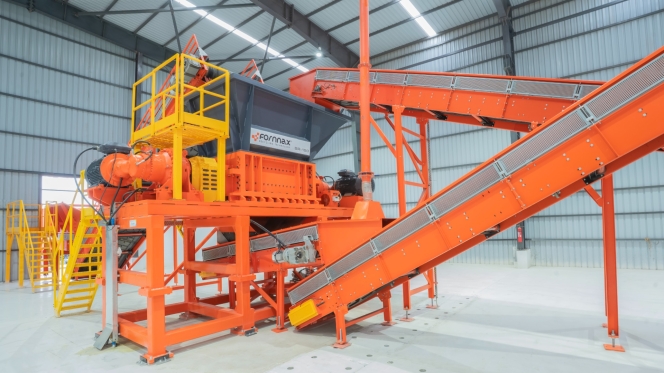
Fornnax has officially launched one of the world's largest integrated hubs for recycling innovation: a New Product Development centre and demo plant spanning over 12 acres. This facility is a critical milestone in the company's strategic vision to become a global leader in recycling solutions by 2030. It is designed to accelerate the advancement of recycling technology through a comprehensive, customer-focused approach.
The centre’s core function is its New Product Development framework, which is built upon a meticulous Gate Review Process. This system ensures precision from conception to completion. The journey begins with market research and ideation from the Sales and Marketing team, followed by a strategic review by the Leadership Team. The Design Team then creates detailed plans that are evaluated by Manufacturing, Service and Safety teams. After final approval, a functional prototype is built and subjected to a rigorous six to eight-month validation phase. The process concludes with design optimisation for mass production, officially launching the equipment for the global market. This method not just upgrades Fornnax's shredders and granulators – enhancing their capacity, energy efficiency and operational availability to 18–20 hours per day – but also validates the equipment for up to 3,000–15,000 hours under real-world conditions

A key feature of the facility is its open-door policy for clients. Customers can bring their specific materials to the demo plant to test equipment performance across various machines and conditions, providing a risk-free environment for informed investment decisions. The centre will also drive research into emerging recycling applications, such as E-waste, cables and lithium-ion batteries, where specialised engineering teams will conduct feasibility studies to design tailored solutions.
Beyond technology, the facility includes an OEM training centre dedicated to developing a skilled workforce. The programme trains operators and maintenance engineers, who gain hands-on experience before being deployed to support Fornnax's customer base. The company will also deliver comprehensive corporate training to domestic and international clients, empowering them with the expertise for optimal plant operation and maintenance. By uniting R&D, testing and training under one roof, Fornnax is establishing a powerful foundation to scale its offerings and lead the next generation of recycling technology.
Jignesh Kundariya, Director and CEO, Fornnax, said, "Innovation in product development is the key to success of becoming a global leader. With this new facility, we now have the speed, flexibility and controlled environment to design, test and validate new technologies in just six to eight months, something that would take significantly 4–5 years at a customer site. Each machine will undergo validation according to global standards, with every critical part and assembly rigorously tested under Engineering Build (EB) and Manufacturing Build (MB) protocols. Our goal is to empower customers with clarity and confidence before they invest. This facility allows them to test their own materials under real-world conditions, compare machines and see results firsthand. It’s not just about selling equipment; it’s about building trust through transparency and delivering solutions that truly work for their unique needs.”
Smithers to Expand Rolling-Resistance Testing Capabilities in China
- By TT News
- November 21, 2025
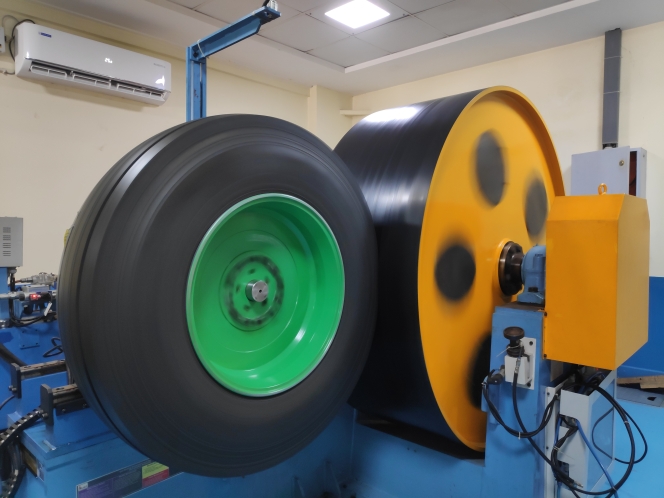
Smithers, the US-based testing and consulting group, is expanding its tyre testing operations in China with three new capabilities designed to better replicate real-world driving conditions. The investment will enhance the company’s rolling-resistance testing at its Suzhou tyre and wheel centre, strengthening its offering to global carmakers and tyre manufacturers.
The new features focus on factors that can influence vehicle energy loss, range, and overall efficiency—a growing concern as regulators tighten standards and EV makers push for longer driving range.
One new capability will allow rolling-resistance testing to be carried out with variations in slip and camber angles for passenger car and light truck tyres. Standard tests are performed at zero degrees, but even small changes in wheel alignment or body movement during real driving can affect energy consumption. The enhanced system lets customers study these effects and refine tyre designs accordingly.
Smithers is also adding high- and low-temperature rolling-resistance testing for truck and bus tyres, an extension of the temperature-controlled testing it introduced for passenger tyres in 2022. The company said demand has risen as manufacturers look to understand how cold weather affects range—a key issue for electric commercial vehicles.
A third new service will allow tyres to be tested together with chassis components such as half-shafts and brake discs. This gives OEMs independent data on how these parts contribute to overall resistance, helping them to identify where energy is being lost and to fine-tune vehicle efficiency.
All three capabilities are expected to be online by 1 December 2025.
“Smithers is seeing increased demand on a global scale for testing of tires and vehicles that more closely mimics real-world conditions,” said Derek Read, Vice President of Asia Pacific / Global Development, Materials Science and Engineering, Smithers. “These new capabilities are strategic investments into the refined, scenario-based testing our clients require to improve both tire and tire-chassis-vehicle system performance.”
Autonomous Robots Transform Continental Retreading Operations
- By TT News
- November 19, 2025
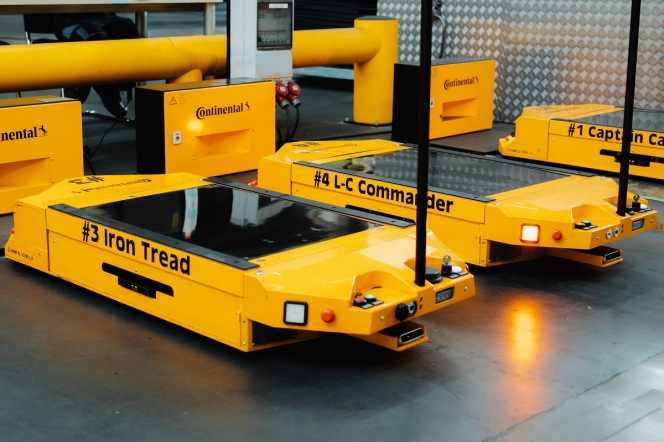
Continental's Hannover-Stöcken plant is pioneering a new era in sustainable manufacturing by seamlessly integrating advanced robotics into its core operations. Since their deployment in March 2025, a team of seven autonomous mobile robots (AMRs) has become the central nervous system for material transport, fundamentally reshaping the workflow for retreading truck and bus tyres.
This shift to automation has profoundly changed the human role on the production floor. Employees, once tasked with the physically strenuous job of manually moving heavy tyres using cranes and trolleys, are now focused on more cognitively demanding responsibilities. Their expertise is directed towards machine setup, process oversight and meticulous quality control, making their work more ergonomic and skilled.
The AMRs operate with sophisticated independence, navigating the production hall using a fusion of sensors, 360-degree cameras and AI-driven software. They efficiently ferry ‘green’ tyres between critical stages: from the building machine, where fresh rubber is applied, to the curing presses for vulcanisation and finally towards inspection. This automated coordination is digitally linked to the plant's order system, allowing for dynamic routing to optimise workflow and manage capacity.
This initiative is a cornerstone of Continental's global strategy to modernize tyre production through digitalisation and smart automation. The success in Hannover has already inspired the rollout of similar robotic solutions across the company's international network, from North America to Asia. The move aligns perfectly with the plant's sustainable mission, which is the ContiLifeCycle process itself. This process breathes new life into used tyre casings by carefully inspecting them, applying new tread rubber and vulcanising them to create a product that performs like new. The environmental benefit is substantial, as up to 70 percent of the original tyre's material is reused, significantly conserving resources.
The human element was crucial to the project's success. Continental ensured widespread employee acceptance through comprehensive training and even involved the workforce in christening the robots with creative names. This thoughtful approach has cemented the AMRs not as mere machines but as valued teammates in a shared mission to make tyre production more efficient, sustainable and future-ready.
Felix Hantelmann, head of the ContiLifeCycle plant, said, “Self-driving robots have been supporting our production workflow for six months now. They handle simple, repetitive transport tasks such as moving a tyre from one point to another. The robots are directly connected to our digital order system, so they know exactly where to go and how to coordinate with each other to get there. They are a valuable addition to our daily operations and help create a safe, efficient and ergonomically optimised production environment.”


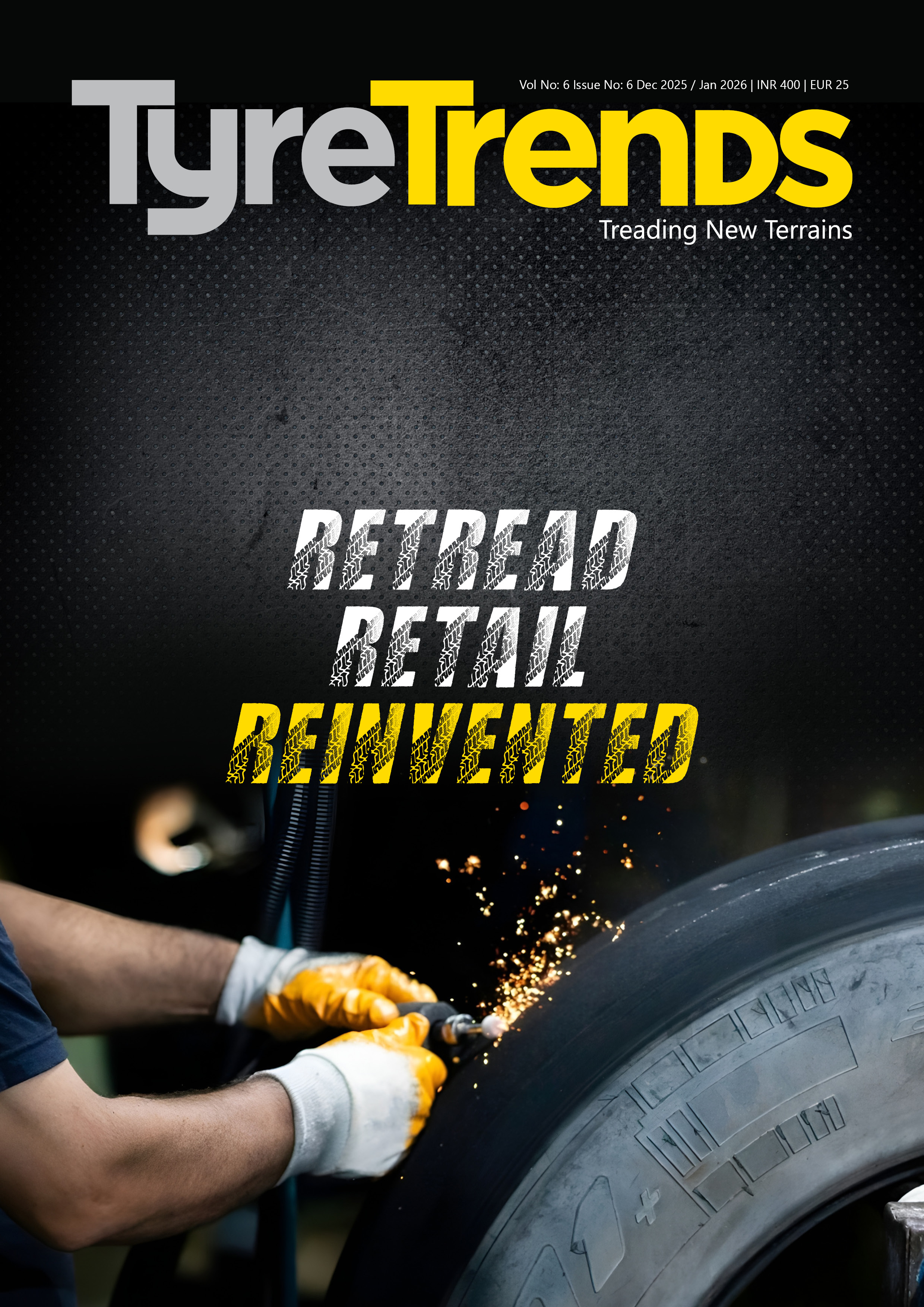



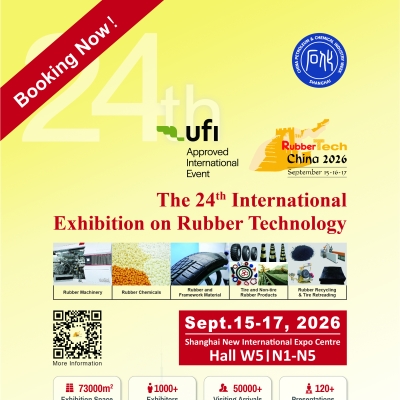
Comments (0)
ADD COMMENT